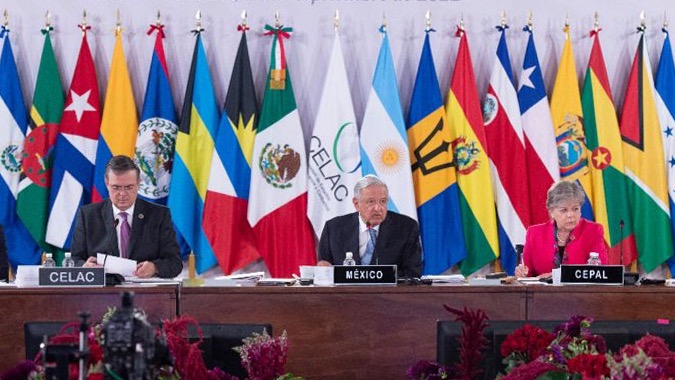Navigating Borders: Charting a Course to Peaceful Coexistence in South America
South America, a continent rich in cultural diversity and historical depth, has confronted its share of territorial disputes. These conflicts, frequently rooted in intricate historical events, colonial legacies, and post-independence power struggles, have posed significant challenges to regional stability. However, recent diplomatic advancements offer a compelling narrative of hope, showcasing the potential for peaceful resolutions and enhanced inter-state cooperation. This analysis examines the lessons learned, highlighting the promising prospects for a future characterized by unity and enduring peace across the South American continent.
The Historical Context: A Foundation for Understanding Effective conflict resolution in South America demands a thorough understanding of the historical context underpinning these disputes. Ignoring the complexities of past events undermines the pursuit of lasting solutions. A comprehensive and nuanced appreciation of historical grievances and claims is fundamental to building mutual understanding and fostering trust among nations.
Dialogue and Negotiation: Cornerstones of Peaceful Resolution The most successful diplomatic initiatives in South America underscore the vital role of open dialogue and constructive negotiation. Maintaining open communication channels is essential for building trust and identifying areas of common interest, paving the way for peaceful resolutions. This requires a commitment from all parties to engage in good-faith discussions, prioritizing shared interests and a collective commitment to finding mutually agreeable solutions.
Lessons from Success: The Beagle Channel and Beyond The successful resolution of the Beagle Channel dispute between Chile and Argentina serves as a powerful case study. Analyzing this and other successful diplomatic endeavors provides invaluable insights into effective strategies and methodologies. Identifying the key factors contributing to these successes informs future negotiations, enhancing the likelihood of achieving peaceful settlements.
Regional Organizations: Catalysts for Cooperation Regional organizations, such as the Organization of American States (OAS), play a critical role in promoting dialogue and collaboration. Strengthening their capacity to mediate and facilitate discussions is crucial for supporting diplomatic efforts and reinforcing regional unity. Enhanced collaboration and coordination among these organizations can create a more effective framework for conflict resolution.
Mediation: A Neutral Path to Compromise Impartial mediation has proven invaluable in resolving territorial disputes. Regional leaders, acting as neutral facilitators, can assist nations in finding common ground, guiding them towards mutually acceptable compromises, and encouraging collaborative problem-solving. Their role is to navigate the complexities of the disagreements and help participating nations reach an acceptable outcome.
Addressing Root Causes: Beyond Territorial Claims It’s crucial to recognize that territorial disputes often mask deeper underlying issues. Socioeconomic disparities and cross-border criminal activities can exacerbate tensions and hinder peaceful resolutions. Addressing these root causes is vital for achieving comprehensive and sustainable solutions that promote long-term stability and regional security.
The Role of International Law: A Framework for Equity International law provides a valuable framework for resolving territorial disputes fairly and equitably. Adherence to established legal principles and international treaties ensures legitimacy and transparency in diplomatic efforts, increasing the likelihood of durable agreements that are respected by all parties involved.
Building Trust and Confidence: Essential for Lasting Peace Successful diplomacy necessitates a conscious effort to build trust and confidence. Confidence-building measures, such as joint economic projects, cultural exchanges, and people-to-people initiatives, can cultivate positive relationships and reduce mutual suspicion, thereby laying the groundwork for lasting peace and cooperation.
Inclusive Participation: Engaging Civil Society Diplomatic processes should not be limited to government representatives. Engaging civil society organizations, academic institutions, and grassroots movements enriches the process with diverse perspectives, fosters a sense of shared ownership, and broadens support for peaceful solutions. This ensures that the process is truly representative of the populations impacted by the conflict.
People-to-People Diplomacy: Bridging Cultural Divides Promoting cultural exchanges, educational programs, and tourism fosters understanding and empathy between communities. By breaking down stereotypes and fostering personal connections, people-to-people diplomacy contributes significantly to building bridges and resolving conflict through enhanced communication and mutual understanding.
Economic Integration: A Powerful Incentive for Cooperation Initiatives promoting economic integration, such as the Union of South American Nations (UNASUR) or the Pacific Alliance, can serve as powerful catalysts for cooperation. By focusing on shared economic benefits, nations can find common ground, reduce tensions, and build a stronger foundation for peaceful coexistence.
Learning from Past Mistakes: A Path to Improvement Analyzing past failures in diplomatic efforts is crucial for identifying shortcomings and avoiding repeated mistakes. Understanding the reasons behind unsuccessful attempts informs the development of more effective strategies in future negotiations, leading to a greater likelihood of success.
Investing in Conflict Resolution Expertise: A Commitment to Peace Diplomacy and conflict resolution are valuable skills requiring dedicated development. Governments, civil society organizations, and individuals should invest in training and educational programs to enhance their capacity to address territorial disputes effectively. This investment in human capital is an investment in a more peaceful future for the region.
Cultivating a Culture of Peace: A Long-Term Endeavor Promoting a culture of peace through education, media, and public awareness campaigns is essential for creating an environment conducive to peaceful conflict resolution. Emphasizing values such as tolerance, understanding, and dialogue is key to building a lasting peace that transcends the resolution of specific disputes.
Empowering the Next Generation: Youth Engagement in Peacebuilding Investing in youth engagement is critical for the future. Involving young people in diplomatic efforts brings fresh perspectives, innovative ideas, and a renewed commitment to finding creative solutions to territorial disputes. They are, after all, the inheritors of a peaceful South America.
Conclusion: A Shared Vision of Peace and Cooperation Recent diplomatic efforts in South America offer substantial promise. By leveraging historical understanding, promoting open dialogue, harnessing the power of regional organizations, and incorporating inclusive participation, the continent can move towards a future defined by unity and lasting peace. Through collaborative effort and a shared commitment, the vision of a unified and peaceful South America can become a reality.



